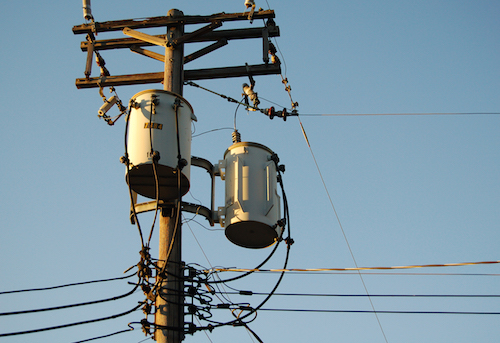 Connecticut is the fifth most densely populated state in the nation yet is one of the lowest energy-consuming per capita states. That means that while energy consumers in the state use less energy, there’s a still a lot of consumers. Getting electricity to all those consumers has long been an expensive problem.
Connecticut is the fifth most densely populated state in the nation yet is one of the lowest energy-consuming per capita states. That means that while energy consumers in the state use less energy, there’s a still a lot of consumers. Getting electricity to all those consumers has long been an expensive problem.
In the industry’s terminology, transmission refers to the long distance sending of bulk power in excess of several hundred megawatts (MW) from generators over high tension electrical lines. Transmission lines are expensive projects to build but once in place, they improve reliability and reduce the threat of brownouts or black outs. Distribution lines, meanwhile, refer to the local “poles and wires” that send energy at a rate of several hundred kilowatts (KW) to area homes and businesses.
Delivery charges charges are of everyone’s bill, no matter if you are on the standard offer or are signed up with electricity supplier. They include:
- Transmission Charge – the price for delivery of electricity over high voltage power lines from the generation company to the distribution company.
- Customer Service Charge – the monthly charge that covers such items as customer billing and meter reading.
- Distribution Charge – the price for delivery of electricity over poles and wires to homes or businesses.
- Systems Benefits Charge – covers the cost of public education and hardship protection.
- Competitive Transition Assessment – covers the electric distribution company’s stranded costs.
- Conservation and Load Management Charge – this portion goes to the Energy Conservation and Load Management Fund, which is used to support cost-effective energy conservation programs.
- Renewable Energy Investment Charge – this portion goes to the Renewable Energy Investment Fund, which promotes the growth, development and sale of renewable energy sources.
- Fuel Adjustment – recovers the difference between Eversource’s and UI’s total actual fuel cost and the amount of fuel revenue the companies recover in each kWh of sales.
Shocking Increases
Recently, both United Illuminating (UI) and Eversource petitioned PURA to raise the amount of their fixed transmission and distribution charges. About 328,000 customers in 17 communities served by The United Illuminating Co. could see their monthly electric bill rise by $9 each month this year, followed by another $9 per month next year and then another $9 the year after if the company’s requested proposed distribution rate increase is approved. Connecticut’s Office of Consumer Counsel is opposing the increase.
UI has said the increased rate is needed to pay for ongoing modernization of UI’s distribution network. Both UI and Eversource currently charge the highest fixed delivery rates in all of New England. UI charges $17.25 per month while Eversource charges $19.25 per month.
However, transmission projects began coming under close scrutiny following a mid-winter investigation by the Federal Energy Commission (FERC) which found average transmission costs In New England are disproportionately higher than in some other regions of the country, accounting for nearly 15 percent of total electricity costs. This past August, U.S. Sen. Richard Blumenthal, D-Conn. called transmission line projects a “profiteering boondoggle” since they have guaranteed high rates of return through FERC-back incentive programs.